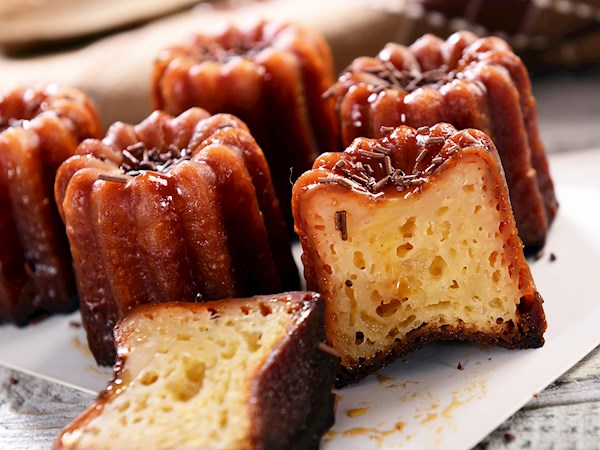
Caneles de bordeaux - traditional French sweet dessert
Chamberlains of London – Perfect canelé is a beloved French pastry known for its dark, caramelized exterior and custard-like interior. The canelé de Bordeaux, with its unique texture and flavor, often surprises those who are unfamiliar with it. Though simple in appearance, creating the perfect canelé involves careful attention to detail. This pastry, often overshadowed by more popular French treats, has a reputation for being difficult to master. However, with the right technique, ingredients, and patience, you can achieve perfection.
The canelé batter is relatively simple but requires a precise balance of ingredients. The base consists of milk, butter, eggs, sugar, and flour, much like a clafoutis or sweet Yorkshire pudding. The key to a perfect canelé lies in the right ratios of flour to milk, butter, and eggs. The batter should be smooth, with a high liquid content to ensure a moist yet springy interior.
Nicola Lamb, a renowned pastry chef, explains that the high liquid content in the batter, coupled with the starch gelatinization and egg coagulation, creates the canelé’s distinct texture. The batter cooks in a unique way: as it heats, the water evaporates, leaving behind a holey, custard-like network inside the pastry. Using the right proportions of ingredients, such as 1:3.6 flour to milk, and the proper technique, ensures a tender and flavorful result.
One of the most critical factors in achieving the perfect canelé is the use of egg yolks. Many pastry chefs, including Paula Wolfert and Dominique Ansel, recommend using only egg yolks for a richer flavor. The addition of a single whole egg, however, can provide a lighter texture while maintaining a dense, moist interior. By carefully selecting the right number of egg yolks, you can adjust the canelé’s texture to your preference.
Flavoring is also an essential part of making canelés. The classic combination of vanilla and dark rum infuses the batter with a rich, aromatic taste. While some bakers opt for vanilla extract as a shortcut, using a vanilla pod is traditional and offers a more intense flavor. Adding rum complements the vanilla and contributes to the unique aroma of canelés.
“Read about: No More Cracks! A Guide to Boiling Eggs That Are Easy to Peel”
The method of making canelés requires attention to detail, with minimal room for error. To start, whisk the sugar into the eggs, followed by the sifted flour, salt, and melted butter. After adding the milk and rum, the mixture should be smooth. The key to success lies in resting the batter overnight or for at least four hours to allow the flour to hydrate fully. This step ensures that the batter will have a dense yet even rise during baking.
When preparing your canelé moulds, be sure to grease them thoroughly with melted butter or baking spray. You can opt for traditional copper moulds, which some bakers swear by, or use nonstick metal moulds. Silicone is generally not recommended, as it doesn’t yield the same crisp texture. For those using copper, consider seasoning the moulds with beeswax to achieve a shiny, non-stick finish. This traditional method is said to impart subtle flavor to the pastry, though it’s not strictly necessary for success.
The temperature at which the canelés are baked is another crucial factor. Some bakers prefer to start baking with a hot tin, while others use a cold one. After experimenting, many find that starting with a cold tin and a steady temperature of 200°C (390°F) works best. Bake the canelés for about 70-90 minutes, depending on how dark you like the crust. The ideal canelé should have a deep, mahogany-colored shell with a slightly crispy texture that contrasts with the soft interior.
It’s essential to keep an eye on your canelés during baking. If the tops begin to puff up, carefully prick them with a knife to release steam. This helps to prevent any air bubbles from forming, ensuring that the canelés rise evenly.
Once the canelés are baked, remove them from the oven and unmould them immediately. A butter knife can help to release the pastries from the moulds without damaging them. Allow the canelés to cool on a rack. As they cool, the exterior will become even crispier, and the interior will set to the perfect custard-like consistency.
While canelés are best enjoyed the day they’re baked, they can be stored for a short time and reheated in a warm oven. The freshly baked canelé offers the best texture and flavor, with its caramelized crust and tender interior.
“Read more: Banana Chocolate Ice Cream from Le Stanze Bistrot Cafe”
Here is the recipe for making your own perfect canelés:
Ingredients
Method
Enjoy your freshly baked canelés with a cup of coffee or tea, and savor the perfect balance of texture and flavor.